There is a world beneath the sand in the enormous deserts like the Sahara, Arabian, and Gobis, which may appear harsh and lifeless. This world is much beyond our comprehension.
Against the common belief that deserts only mean sand and cacti, there are dozens of species of reptiles and insects, along with a few trees that are built tough and find their homes in the heat of a desert.
In this article, we’ll have a detailed look at the most common trees found in the desert, often referred to by their unique desert tree names, what makes them so special and capable of surviving the desert’s harsh environment, and which, if any, can be called the most common tree of the desert.”
Desert Trees, The Build
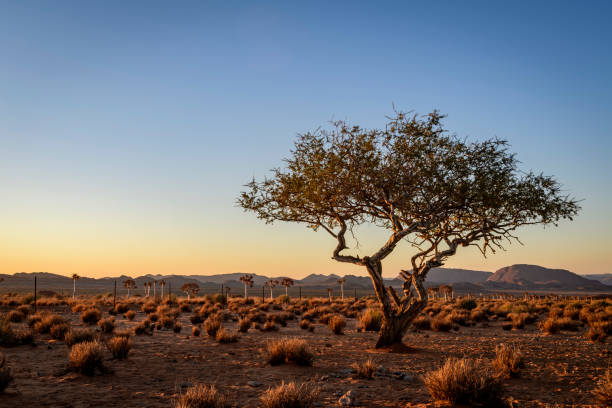
Regarding adaptability, desert trees have made a lot of modifications over the years to survive the heat and water scarcity.
Starting with the leaves desert plants have leaves that are very far from our usual concept of leaves, which is evident from the fact that most of them don’t even have photosynthesis capability; they rely on their trunks for that.
The leaves found on desert trees are very small and largely converted into spines, thereby reducing the surface area, which helps minimize water loss through surface evaporation. The stems on these trees are flat, very thick, and perform photosynthesis, which is why they are green in color.
The stems themselves have various features to avoid water loss; there’s a waxy layer over them, and they are spongy to store water. If we talk about the roots, they extend very deep into the soil in search of water to support survival in the harsh heat of the deserts.
These features are necessary as the trees of the desert have a very important role to play in their ecosystem; they are somewhat capable of providing shade to humans and animals, they are the saviors against extensive soil erosion, and they provide a home for sustaining the diverse wildlife of the deserts.
Trees Commonly Found in The Desert
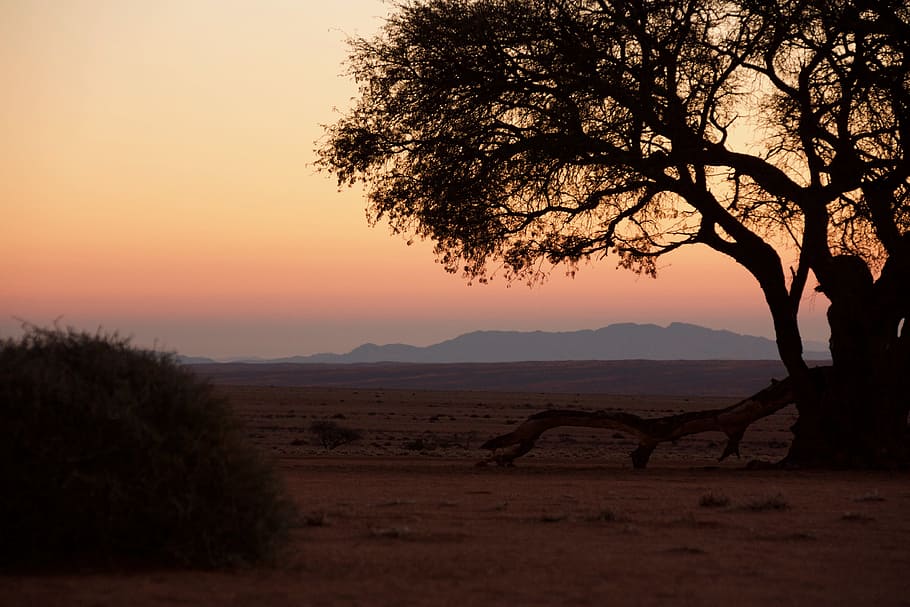
Contrary to popular belief, deserts don’t only have cactuses. In these dry areas, we can actually find a remarkable variety of trees. The only catch? Because they are less prevalent than we might have thought, the cactus myth continues to exist.
When we list down the commonly found trees in the desert, the following names are prominent:
1. Desert Marigold
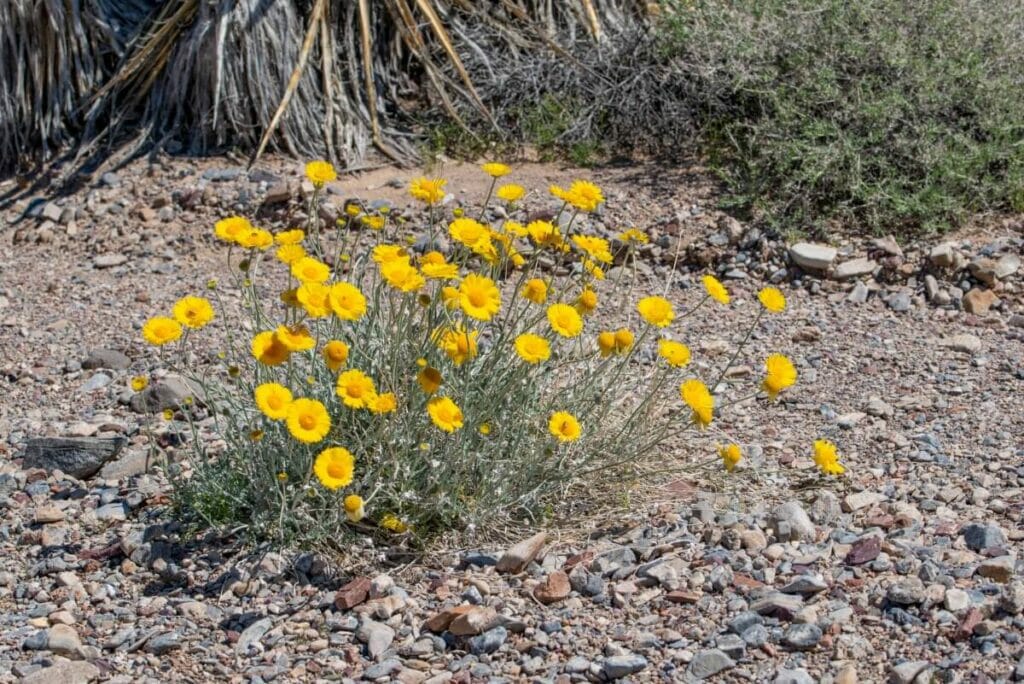
Botanical Name: Baileya Multiradiata.
The Desert Marigold is one of the commonly found trees in the desert. It belongs to the aster family and is found in parts of Mexico and the United States.
They live for a year, are perennial pants, and have very fine hair-like leaves.
These grow to a maximum height of about 25 to 30 inches.
2. Desert Willow Tree
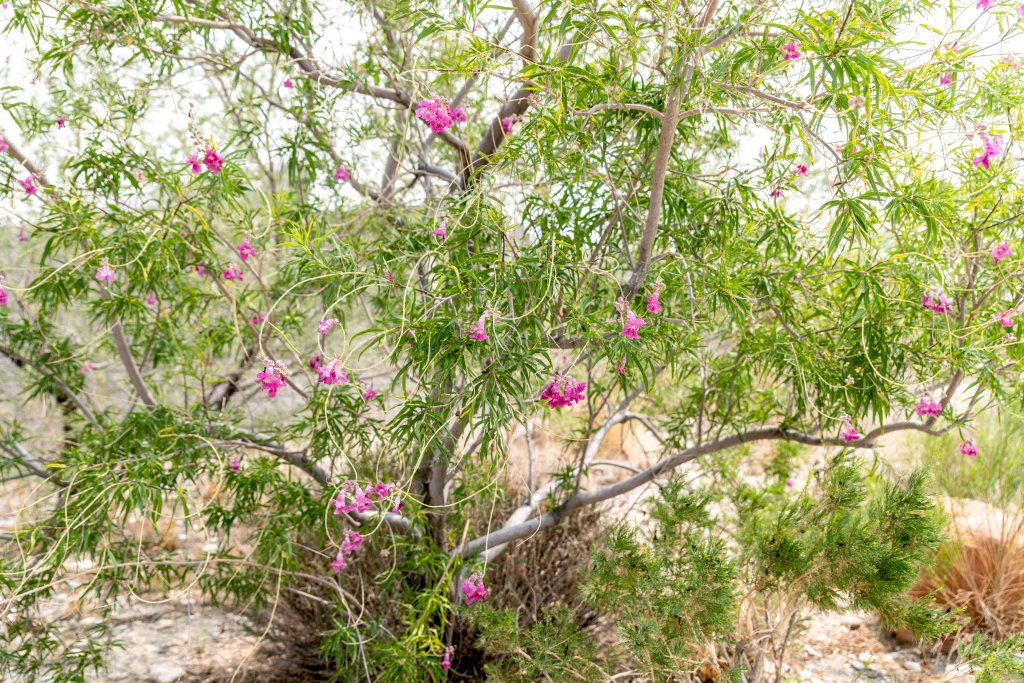
Botanical Name: Chilopsis Linearis.
Delicate in nature, also found in parts of the U.S. and Mexico, are deciduous trees. During May is when they flower, and the bloom period extends till September.
They have beautiful looking light pink and lavender colored flowers. The family they belong to is the Trumpet Creeper. These grow to a height of about 35 to 40 feet; the leaves on this tree are light green and are 4 to 12 inches long.
2. Desert Sage

Botanical Name: Salvia Dorrii.
Vert beautiful looking shrubs, these grow to a height of about 2 to 3 meters. The flowers of these extremely drought-resistant plants have a deep blue color and purple bracts. These plants also have a wide medicinal use, including treating headaches, stomachaches, and flu.
Their biggest survival hack is that once they are fully grown, they don’t need any water for further survival; they are evergreen plants.
Desert Trees, The Most Common
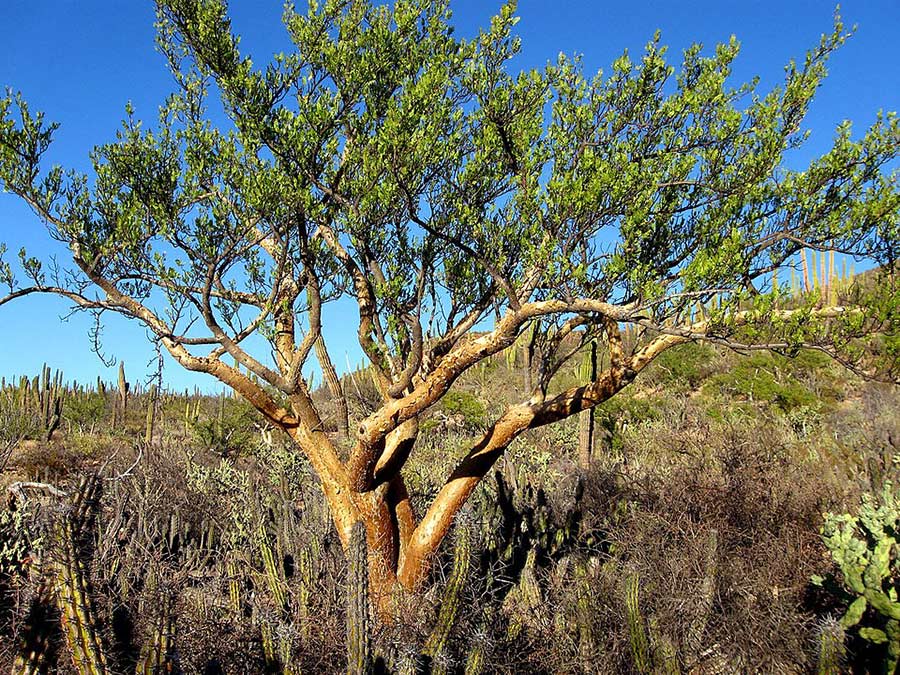
So far, we have discussed three of the commonly found trees in the deserts, but there is one that is regarded as the most common among desert trees; it is called the Elephant Tree!
The botanical name for the Elephant tree is Bursera Microphylla. This tree belongs to the Bursera family and is recognized by its characteristic thick trunk, capable of storing water for days. Upon close study, this tree is found to be specially adapted for survival in desert conditions.
Commonly found in the deserts of Arizona, Anza-Borrego, Sonoran, and Santa Rosa. The massive trunk of this tree is what got its name, the Elephant Tree, as it resembles the trunk or giant leg of an elephant.
The Elephant tree also finds its use in the medicinal industry and is a common ingredient in preparing medicines such as analgesic, anti-inflammatory, anti-diabetes, etc.
Conclusion
All in all, the desert wildlife, however scarce, is beautiful and tough at the same time.
We have discussed the various distinctive features of these trees and the more commonly found desert trees and learned about the Elephant Tree, which is the most commonly found tree in the desert apart from the vast majority of cactuses.
We believe we were able to fulfill our agenda, which was to have a closer look at the most commonly found desert flora and learn about its distinctive nature.
We would like to end with the thought that the lifespan of trees is proof in itself of the power of resilience and perseverance.
Go green!

